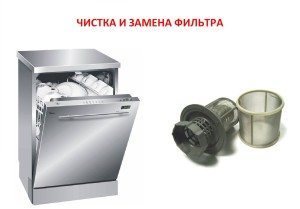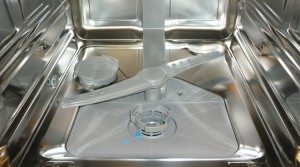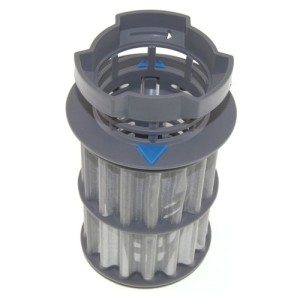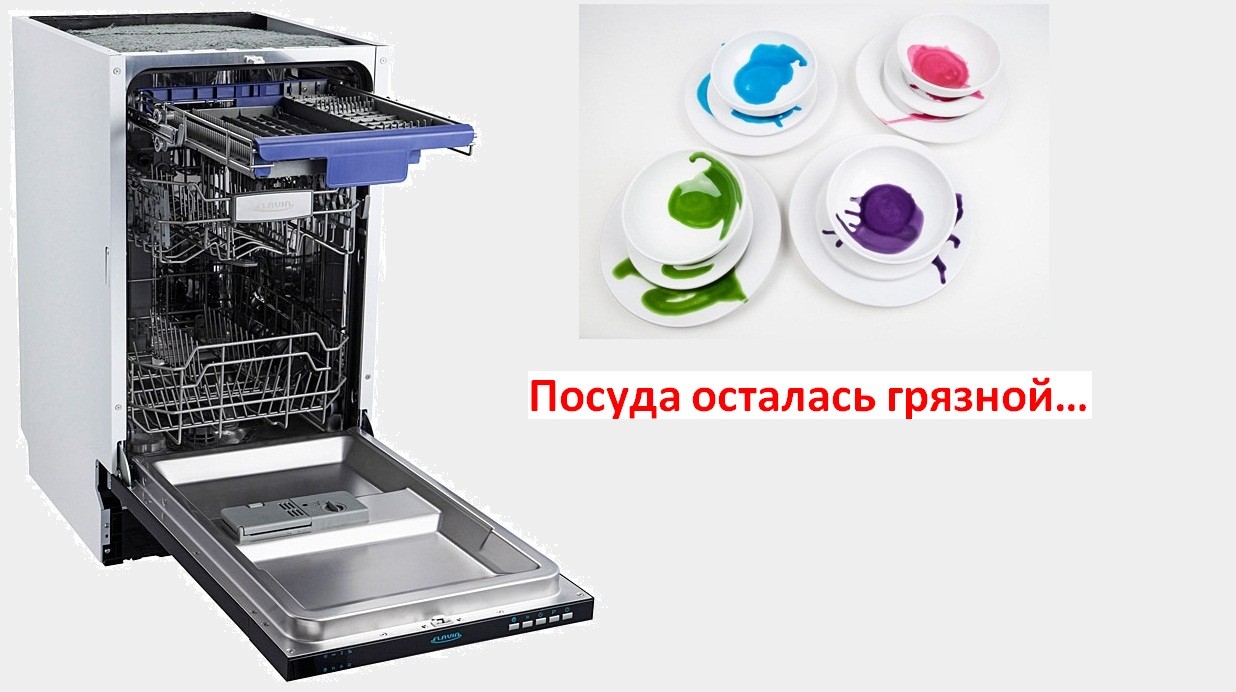Replacing the dishwasher filter
 To prevent your dishwasher from breaking down quickly, you need to monitor it at least occasionally. According to the recommendations of specialists, it is necessary to carry out a small preventative cleaning approximately once every two weeks. This prevention comes down to cleaning the filter. If the dishwasher is used for a long time, then you need to think about replacing the filter. Replacing and cleaning the dishwasher filter is the topic of our story.
To prevent your dishwasher from breaking down quickly, you need to monitor it at least occasionally. According to the recommendations of specialists, it is necessary to carry out a small preventative cleaning approximately once every two weeks. This prevention comes down to cleaning the filter. If the dishwasher is used for a long time, then you need to think about replacing the filter. Replacing and cleaning the dishwasher filter is the topic of our story.
Dishwasher garbage filter and its elements
Any user of a Bosch (or other brand) dishwasher who has taken the time to read the instructions for it knows where the garbage filter is located. In a good way, after purchasing, installing a “dishwasher” and its first test run, the first thing you should do is deal with the garbage filter, find it, unscrew it, and examine all its elements.
 The garbage filter is located at the bottom of the dishwasher tank. In this case By tank we mean the inside of the machine, the hopper in which baskets for dishes are installed. And in which we put dirty dishes. If we take out the notorious dish baskets, then at the very bottom of the Bosch dishwasher tank, we will see a rotating plastic spray arm. To the right or left of it there is a glass-like twist-out element - this is the garbage filter, which consists of the following elements:
The garbage filter is located at the bottom of the dishwasher tank. In this case By tank we mean the inside of the machine, the hopper in which baskets for dishes are installed. And in which we put dirty dishes. If we take out the notorious dish baskets, then at the very bottom of the Bosch dishwasher tank, we will see a rotating plastic spray arm. To the right or left of it there is a glass-like twist-out element - this is the garbage filter, which consists of the following elements:
- made of a flat metal mesh called a fine filter;
- from an external coarse filter similar to a fine-mesh glass, which is located directly under the mesh;
- from the internal coarse filter, which is inserted into the external filter. It is also placed under the mesh.
The garbage filter is designed to catch food debris washed off from dirty dishes and prevent these residues from entering the circulation pump.
As you understand, quite a lot of these residues will accumulate on the filter, even though the dirty dishes will be cleaned before they are placed in the washing basket. If the fine mesh, and even more so the coarse filters, become clogged with dirt and grease, water will stop leaving the tank back into the circulation system and the Bosch dishwasher will stop working.
Important! After each dishwashing, look at the bottom of the tank and check the condition of the metal mesh; if pieces of food and other dirt are clearly visible on it, it is better to carry out an extraordinary cleaning.
Cleaning the filter correctly
To properly clean the Bosch dishwasher filter, you do not need to have any special knowledge or skills; anyone can do this simple job. The main thing is to do everything on time and not allow a blockage to form, because a blockage will lead to machine breakdown. Each brand and model of dishwasher may have its own characteristics when it comes to cleaning the dust filter. The shape of the filter, its location, and removal features may differ, so we will describe a typical procedure that is suitable for most dishwashers. And so, in order, we do the following.
- We take out all the extra baskets from the tank that will interfere with cleaning the filter. As a rule, this is one lower basket for dishes.
- Unscrew the external coarse filter clockwise.
- We take out the fine mesh and take out the internal filter.
- We arm ourselves with an old toothbrush and toothpick and begin to clean the filter elements from greasy deposits and dirt. Note! Usually the filter is cleaned under running water, but if there is a lot of dirt and grease, you can place the filter parts in a bowl of water, add dishwashing detergent and soak it for a while, then start cleaning.
- All elements need to be cleaned well, especially the fine filter mesh. For removing
 For dirt from hard to reach places, use a toothpick.
For dirt from hard to reach places, use a toothpick. - Next, remove the impeller bar and use a toothpick to remove dirt and water stone from all the holes in the sprinklers.
- Now we arm ourselves with a rag and a brush and thoroughly clean the bottom of the tank where the filter is located. A lot of fat usually accumulates under the mesh, especially in cases where the user saves detergent.
Having removed the blockage, you can safely assemble the filter and put it in place, but before that, carefully inspect each element. By the way, it is not only the filter that needs to be cleaned, sometimes it is also necessary to clean the tank and the outer part of the dishwasher. You can read about how to do this correctly in the article How to clean a dishwasher yourself.
The plastic cup and plastic grid must be intact, the fine mesh must also not have visible damage. If you find broken elements on the external or internal filter, or there is damage to the metal mesh, then it is better to change the Bosch (or other) dishwasher filter.
How do you know if the filter needs to be replaced and how to change it?
Replacing the filter is not difficult. Actually, what’s so complicated about it, I unscrewed and threw away the old filter, took it out of the packaging, assembled and installed a new filter - a matter of three minutes.But in fact, the whole “salt of the issue” is not even in the process of replacing the garbage filter, but in how expedient such a replacement is, and whether it needs to be done at all.
By the way, the cost of a new coarse filter can reach up to 3500-4000 rubles, although in appearance it is a simple plastic part, although it was made somewhere in Germany or Italy.
Many dishwasher users ask the question: why buy and install a new filter when the old one, even if damaged, works well, collecting dirt? Why spend a lot of money when everything works fine? In fact, thinking like this is a big mistake; everything can turn into expensive repairs. Imagine that you left a damaged coarse filter in operation, what can happen in this case.
- Some of the food debris will still be deposited on entire parts of the damaged filter mesh, but some of the dirt will slip through the damaged element.
- Once in the circulation pump, dirt settles inside the containers, pipes, and heating element.
- At best, this leads to a deterioration in the quality of dishwashing, and at worst, the heating element may burn out due to dirt and the circulation pump may fail.
Now let's do the math. Replacing a garbage filter will cost you an average of $25. Replacing a heat circulation pump, which can break down due to unsatisfactory filter performance, costs an average of $70, and this does not take into account the post-crisis markup. This is the arithmetic. What to do in this situation, and whether you need such an approach - decide for yourself, we have only provided objective information.
Important! The high cost of spare parts for Bosch dishwashers (and machines of other brands) is due to the fact that they are often produced in Europe, where the cost of production is much more expensive, not to mention the difference in exchange rates.
How do you know when the filter needs to be changed? In this case, everything is simple, if there is damage on the filter through which dirt could potentially get through, it needs to be changed. If it looks very scary (from time to time), but remains intact outwardly, you can safely operate it, removing the blockage along the way.
In conclusion, we note that both cleaning and replacing the Bosch dishwasher filter will not take much time, even if you see such a filter for the first time in your life. Cleaning must be carried out on time and not allow a blockage to form, because the blockage will cause the machine to stop and an error code to appear on the display.
Interesting:
Reader comments
- Share your opinion - leave a comment





















Add a comment